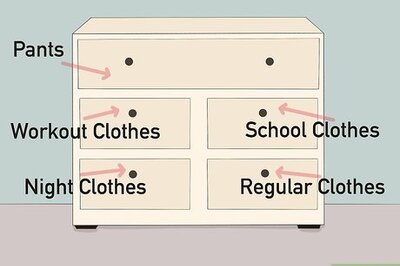
views
London: Your smartphone touchscreen can actually change the way your thumb and brain work together, a new study has found.
More touchscreen use in the recent past translates directly into greater brain activity when the thumbs and other fingertips are touched, researchers found.
"I was really surprised by the scale of the changes introduced by the use of smartphones," said Arko Ghosh of the University of Zurich and ETH Zurich in Switzerland.
"I was also struck by how much of the inter-individual variations in the fingertip-associated brain signals could be simply explained by evaluating the smartphone logs," Ghosh said.
Ghosh and his colleagues realised that smartphones could be a grand opportunity to explore the everyday plasticity of the human brain.
Not only are people suddenly using their fingertips, and especially their thumbs, in a new way, but many of us are also doing it a lot, day after day, researchers said.
The phones are also keeping track of our digital histories to provide a readymade source of data on those behaviours.
To link digital footprints to brain activity in the new study, Ghosh and his team used electroencephalography (EEG) to record the brain response to mechanical touch on the thumb, index, and middle fingertips of touchscreen phone users in comparison to people who still haven't given up their old-school mobile phones.
The researchers found that the electrical activity in the brains of smartphone users was enhanced when all three fingertips were touched.
In fact, the amount of activity in the cortex of the brain associated with the thumb and index fingertips was directly proportional to the intensity of phone use.
The thumb tip was even sensitive to day-to-day fluctuations: the shorter the time elapsed from an episode of intense phone use, the researchers said, the larger was the cortical potential associated with it.
The results suggest that repetitive movements over the smooth touchscreen surface reshape sensory processing from the hand, with daily updates in the brain's representation of the fingertips, researchers said.
"We propose that cortical sensory processing in the contemporary brain is continuously shaped by personal digital technology," Ghosh and his colleagues said.
The study is published in the Cell Press journal Current Biology.

















Comments
0 comment